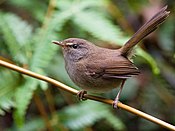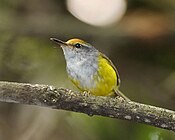Superregnum: Eukaryota
Cladus: Unikonta
Cladus: Opisthokonta
Cladus: Holozoa
Regnum: Animalia
Subregnum: Eumetazoa
Cladus: Bilateria
Cladus: Nephrozoa
Superphylum: Deuterostomia
Phylum: Chordata
Subphylum: Vertebrata
Infraphylum: Gnathostomata
Megaclassis: Osteichthyes
Cladus: Sarcopterygii
Cladus: Rhipidistia
Cladus: Tetrapodomorpha
Cladus: Eotetrapodiformes
Cladus: Elpistostegalia
Superclassis: Tetrapoda
Cladus: Reptiliomorpha
Cladus: Amniota
Classis: Reptilia
Cladus: Eureptilia
Cladus: Romeriida
Subclassis: Diapsida
Cladus: Sauria
Infraclassis: Archosauromorpha
Cladus: Crurotarsi
Divisio: Archosauria
Cladus: Avemetatarsalia
Cladus: Ornithodira
Subtaxon: Dinosauromorpha
Cladus: Dinosauriformes
Cladus: Dracohors
Cladus: Dinosauria
Ordo: Saurischia
Cladus: Eusaurischia
Subordo: Theropoda
Cladus: Neotheropoda
Cladus: Averostra
Cladus: Tetanurae
Cladus: Avetheropoda
Cladus: Coelurosauria
Cladus: Tyrannoraptora
Cladus: Maniraptoromorpha
Cladus: Maniraptoriformes
Cladus: Maniraptora
Cladus: Pennaraptora
Cladus: Paraves
Cladus: Eumaniraptora
Cladus: Avialae
Infraclassis: Aves
Cladus: Euavialae
Cladus: Avebrevicauda
Cladus: Pygostylia
Cladus: Ornithothoraces
Cladus: Ornithuromorpha
Cladus: Carinatae
Parvclassis: Neornithes
Cohors: Neognathae
Cladus: Neoaves
Cladus: Telluraves
Cladus: Australaves
Ordo: Passeriformes
Subordo: Passeri
Infraordo: Passerida
Superfamilia: Sylvioidea
Familia: Cettiidae
Genera: Abroscopus – Cettia – Horornis – Phyllergates – Tesia – Tickellia – Urosphena
Name
Cettiidae Alström, Ericson, Olsson, & Sundberg, 2006
References
Alström, P.; Ericson, P.G.P.; Olsson, U.; & Sundberg, P. 2006. Phylogeny and classification of the avian superfamily Sylvioidea. Molecular Phylogenetics and Evolution 38 (2): 381–397. DOI: 10.1016/j.ympev.2005.05.015 PDF Reference page.
Alström P., Hohna, S., Gelang, M., Ericson, P. G. P., & Olsson, U. (2011). Non-monophyly and intricate morphological evolution within the avian family Cettiidae revealed by multilocus analysis of a taxonomically densely sampled dataset. BMC Evol. Biol. 11: 352 [-368] PDF Fulltext
IOC
Vernacular names
English: Bush warblers
中文: 树莺科
Cettiidae is a newly validated family of small insectivorous songbirds ("warblers"), formerly placed in the Old World warbler "wastebin" assemblage. It contains the typical bush warblers (Cettia) and their relatives. As a common name, cettiid warblers is usually used.[1]
Some taxonomic authorities include this entire family, as D. Winkler et al. in an enlarged family Scotocercidae.[2]
Its members occur mainly in Asia and Africa, ranging into Oceania and Europe. The pseudo-tailorbirds, tesias and stubtails, as well as Tickellia and Abroscopus warblers are mostly found in the forests of south and southeastern Asia, with one species reaching as far north as Japan and Siberia. The genus Cettia has the widest distribution of the family, reaching from Western Europe across Asia to the Pacific islands of Fiji and Palau. Most of the species in the family are sedentary, but the Asian stubtail is wholly migratory and the Japanese bush warbler and Cetti's warbler are partly migratory over much of their range. A few species, such as the pale-footed bush warbler, are altitudinal migrants.
The species are small, stubby birds. Most have moderately long to long tails, while the stubtails and tesias have tiny tails that do not even emerge past their tail rectrices. The group is typically clad in dull plumage, often with a line above the eye. Altogether the Cettiidae are a quite variable group containing many aberrant birds that hitherto had been uncomfortably placed with a wide range of unrelated families. The Megaluridae which contain birds which appear very similar to many cettiids are far more uniform by contrast.[3]
Most live in scrubland and frequently hunt food by clambering through thick tangled growth.
Taxonomy
The family Cettiidae was introduced by Per Alström and coworkers in 2006.[1]
|
Cladogram showing the family relationships based on a study by Carl Oliveros and colleagues published in 2019.[4] The number of species is taken from the bird list maintained by Frank Gill, Pamela Rasmussen and David Donsker on behalf of the International Ornithological Committee (IOC).[5]
The family contains 32 species in seven genera.[5]
| Image | Genus | Living species |
|---|---|---|
 |
Abroscopus Baker, 1930 - warblers |
|
 |
Urosphena R. Swinhoe, 1877 – stubtails |
|
 |
Tesia Hodgson, 1837 – tesias |
|
 |
Horornis Hodgson, 1845 |
|
 |
Cettia Bonaparte, 1834 – typical bush warblers |
|
 |
Tickellia Blyth, 1861 – broad-billed warbler |
|
 |
Phyllergates Sharpe, 1883 |
|
References
Alström, P.; Ericson, P.G.P.; Olsson, U.; Sundberg, P. (2006). "Phylogeny and classification of the avian superfamily Sylvioidea". Molecular Phylogenetics and Evolution. 38 (2): 381–397. doi:10.1016/j.ympev.2005.05.015.
Winkler D.; Billerman, S.; Lovette I. (2015). Bird Families of the World. Lynx Editions. pp. 442–444. ISBN 978-84-941892-0-3.
del Hoyo et al. (2006)
Oliveros, C.H.; et al. (2019). "Earth history and the passerine superradiation". Proceedings of the National Academy of Sciences of the United States of America. 116 (16): 7916–7925. doi:10.1073/pnas.1813206116. PMC 6475423. PMID 30936315.
Gill, Frank; Donsker, David; Rasmussen, Pamela, eds. (July 2021). "IOC World Bird List Version 11.2". International Ornithologists' Union. Retrieved 9 December 2021.
Sources
Wikimedia Commons has media related to Cettiidae.
del Hoyo, Josep; Elliott, Andrew & Sargatal, Jordi (eds.) (2006): Handbook of Birds of the World (Volume 11: Old World Flycatchers to Old World Warblers). Lynx Edicions, Barcelona. ISBN 84-96553-06-X
Sefc, K.M.; Payne, R.B. & Sorenson, M.D. (2003): Phylogenetic relationships of African sunbird-like warblers: Moho Hypergerus atriceps, Green Hylia Hylia prasina and Tit-hylia Pholidornis rushiae. Ostrich 74(1-2): 8-17. PDF fulltext
Retrieved from "http://en.wikipedia.org/"
All text is available under the terms of the GNU Free Documentation License

